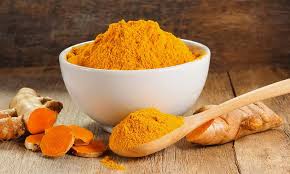By Rebekka Frazer (Accredited Practising Dietitian)
Turmeric is a vibrant yellow spice traditionally used in Indian cooking, with it’s main polyphenolic compound called curcumin. When consumed at the correct clinical dosage, curcumin has been shown to have impart antioxidant and anti-inflammatory benefits within the body.
Chronic inflammation is a contributing factor to many disease states, including:
- Arthritis
- Alzheimer’s Disease
- Obesity
- Cardiovascular disease
- Inflammatory bowl disease (Crohn’s and Ulcerative Colitis)
- Diabetes
Turmeric may therefore play a role in combatting this inflammation.
How to Use Turmeric:
- Add to soups and stews
- Mix it with olive oil and brush onto corn cobs in place of butter and salt
- Stir into scrambled eggs
- Sprinkle over veggies before roasting in the oven
For maximum benefits, make sure you consume turmeric in the presence of black pepper which contains a compound called piperine. Piperine has been shown to increase turmeric’s bioavailability (how easily it is absorbed by the body) by up to 2000%. This won’t be too difficult when using in a curry or other savoury dish.
Curcumin is also a fat soluble nutrient, so best to also ensure your meal contains a source of healthy fat to aid absorption (e.g. olive oil used during cooking or avocado in a salad).
Whilst adding fresh or dried turmeric into your diet where possible, it is worth noting that the clinical dosage of curcumin for anti-inflammatory benefits is 1000mg per day, which is roughly equivalent to 22 teaspoons of dried turmeric. A turmeric supplement is often therefore required to meet this dosage.
For a delicious turmeric and chicken recipe, visit Rebekka’s blog: https://www.nourishedtohealth.com/recipes/turmeric-lemon-and-herb-baked-chicken

